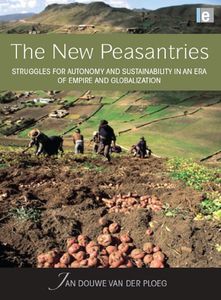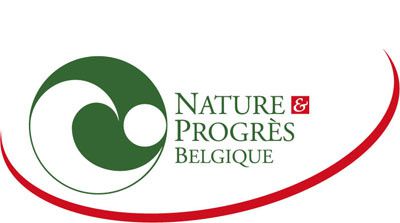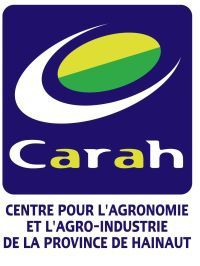RSO-30806 Sociology of Farming and Rural Life - Period 5 [2012/2013] - Wageningen University
Jan-Douwe van der Ploeg, Paul Hebinck
Assignment 1 - Vincent Delobel [MSc Development and Rural Innovation] n° 911025-177-010
Remeker Farm: Strategies to improve autonomy
During the visit of the Remeker Farm (Lunteren, Gelderland), the farmer explained us his way of thinking and relating with his soil, his plants, his cows, milk and cheese. By listening carefully to his narrative, we could notice different strategies he elaborated to foster autonomy toward the markets and external knowledge institutions. Thus, I will describe seven strategies I noticed in the following sections. As most of these strategies are “deviant” from the conventional practices, we can understand them as deliberate struggles for autonomy.

1) Designing the stable together with the cows
Instead of asking an architect to design their everyday workplace, theses farmers rather observed carefully the needs of their cows and came up with an innovative stable design. Doing so in not common in the Netherlands and it was a deliberate choice to rely on locally-produced knowledge rather than on the prescriptions of external experts. These farmers really value their own observations and interpretations for decision-making: open housing (ventilation), free circulation, no corner, straw-manure mattress, extra space per cow.
2) Stopping using vaccines, antibiotics and anti-worm treatments
According to the farmer, these treatments seek to fix the symptoms, not the problems. Thus, he responds to these challenges by changing his own actions on “structural” or “underlying” factors: the living conditions, the food he gives, letting the horns grow… He responds via factors he controls himself rather than relying on externally-provided medicines. Moreover, these responses tend to increase the reliance on the resource-base: the pastures, on-farm biodiversity, cows natural resistance.
3) Strengthening the resource base
Agriculture modernization taught farmers to bypass natural cycles: to feed the plants directly via mineral fertilizers, to boost animal production by giving more concentrates… These strategies leaded to disequilibrium that affected soil, plant, animal and so human health. On the contrary, this farmer considers he works with ‘living nature’: his role is to make the natural cycles or, as Michel Griffon calls them, “natural functionalities” work harmoniously. Thus, he feeds a living soil (worms and microorganisms) with compost. Then, the rich, porous and healthy soil feeds the grass and clovers. Finally, his cows are fed “as ruminants” i.e. with fibrous material and produce good manure. As we can see, the farmer not only relies a lot on his resource base but he also seeks to improve its functioning and its resilience. Thus, he wants to get cows that are naturally resistant to disease and a porous soil able to cope with climate change and water stresses. In order to get it, he deliberately intervenes to reshape his resource-base and he makes particular (uncommon, deviant) decisions that witness a desire for long-term autonomy.
4) Reducing energy costs (incl. transport)
This farmer develops several strategies to reduce energy costs and particularly transport costs. For example, he reduced soil tillage; the entire milk production is processed on the farm itself; he relies a lot on pasturage to increase fodder autonomy and to spread the manure; open housing and natural ventilation, etc. To reduce energy costs not only increases the short-term income (added-value) but also fosters autonomy toward increasing energy prices on the market in the long-term.
5) “Remeker fund”
Besides the impressing economic cost-effectiveness of this farm, the banks did not accept to help him to buy new pieces of land. The refusal of the bank is not a problem for him; he can rely on the commitment of his consumers that will to take part in the development of the farm. Thus, he created the “Remeker fund” where consumers can invest their savings “more safely than at the bank”. Besides the autonomy toward the uncontrollable global financial system, two other aspects are very interesting. Firstly, the project he leads, the specific type of farm he created (organic, sustainable, animal welfare-friendly, that maintains landscape and on-farm biodiversity) motivates consumers to get involved. He created favourable conditions for further development of his farm. Secondly, by asking his consumers to get involved, he ensures that he has to deal only with people he has close relationships with, rather than anonymous bankers or random citizens. These two aspects increase (more or less directly) his agency and his autonomy.
6) Developing a unique taste
The current cheese-making process results from a permanently ongoing innovation process. This is a reflexive innovation process: in order to continuously improve the taste of the cheese (i.e. the final product), the whole farming system is re-thought (living conditions, soil life, fodder quality, cheese maturation conditions etc.). Local knowledge and labour are used to reveal the potential of the local resource-base. Thus, a particular taste is developed; the cheese acquires a strong identity appreciated and recognized by consumers. This allows the farmer to get a fairer price on the market which is only considered as an outlet for high value-added products. This strategy is the opposite of the mainstream standardization of tasteless and anonymous product that deepens the dependence on (input and output) markets. Here, those markets do not rule what happens on the farm. Rather, the local potential is valued.
7) Considering “mirrors” as internal signals for innovation
The farmer told us that it is important to listen to the soil (smell, colour, presence of worms and roots), the cows (hair, manure, and behaviour), the raw milk (colour, taste), the old cheese etc. He considers them as “mirrors” of his actions. As he considers the components of his farm as being in a circle (soil, plants, animals), what he does to a particular component (e.g. soil management) will have impacts on other components (e.g. milk taste). Thus, the various ‘positive’ and ‘negative’ signals the ‘components’ send him are symptoms of the more or less well-functioning of the whole farm. A negative signal will inform him that change is needed, that there is room for improvement. It is important not only to listen carefully to these messages but also to allow the soil, plants, cows and cheese to communicate. Rather than ‘fixing symptoms’, the farmer seeks to increase access to these internal signals that informs him on the real source of the problems. In conclusion, we can say that the innovation process on this farm is driven by internally-provided information rather than by external signals from markets and knowledge institutions. Moreover, as I already said above, the responses will favour the use of the resource-base rather than external resources.
Although this list may not be exhaustive, we can already observe the diversity of strategies to improve autonomy. These strategies play in all the dimensions of farming: knowledge, credits, labour organisation, farming system, relations to input and output markets, innovation process etc. Remeker farm is a particularly “dense” illustration of this multi-faceted struggle for autonomy and is a precious source of inspiration for others.
_________
A lire: van der Ploeg, J. (2008). The New Peasantries. Struggles for Autonomy and Sustainability in an Era of Empire and Globalization. EarthScan, New York. Plus d'infos...

commenter cet article …
























/idata%2F4096338%2FCrops-May-2013%2FDSC01090.JPG)
/idata%2F4096338%2FTransition-P.-Temporaire---Cereales%2FDSC00730.JPG)
/idata%2F4096338%2FHersage-des-prairies---Traction-chevaline%2FDSC00266.JPG)
/idata%2F4096338%2FPremiere-parcelle-agroforesterie%2FDSC00228.JPG)
/idata%2F4096338%2F6--Tour-des-cultures---Novembre-2011%2FDSCN1191.JPG)
/idata%2F4096338%2FTour-des-cultures---Octobre-2011%2FDSCN1146.JPG)

